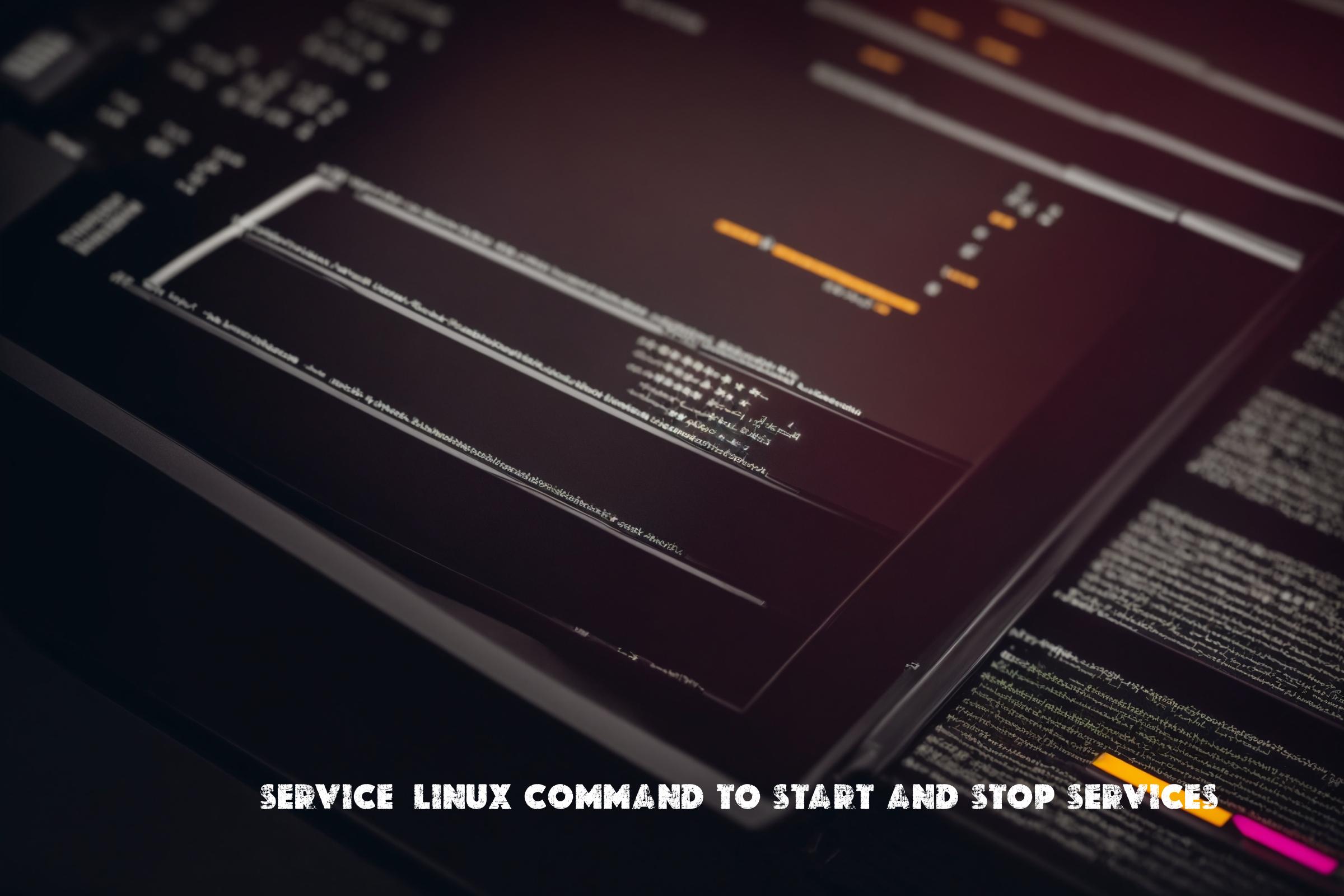
Linux command to start and stop services on old systems
The Linux Service package provides a set of commands that allow users to start, stop, and manage services on a Linux system. Services are background processes that run continuously and provide specific functionality to the operating system or applications. The service package is commonly used in Linux distributions to manage system services.
The service package is written in the C programming language, which is a low-level language commonly used for system programming. C provides the necessary tools and libraries to interact with the operating system and manage system resources efficiently.
Supported Operating Systems
The service package is supported on various Linux distributions, including:
- Ubuntu up to 20
- Debian up to 11
- CentOS up to 7
To install the service package on these operating systems, you can use the package manager specific to each distribution. For example, on Ubuntu and Debian, you can use the following command:
sudo apt-get install service
On CentOS, Red Hat Enterprise Linux, and Fedora, you can use the following command:
sudo yum install service
Commands Examples
Here are some examples of commands that can be used with the service package:
service apache2 start– Starts the Apache web server.service mysql stop– Stops the MySQL database server.service ssh restart– Restarts the SSH server.service nginx status– Checks the status of the Nginx web server.
These commands allow users to easily start, stop, restart, and check the status of various services on their Linux system. The service package provides a consistent interface for managing services, regardless of the specific service being used.
Similar Packages
There are several other packages available that provide similar functionality to the service package. Some of the popular alternatives include:
- systemctl – A command-line utility used to manage systemd services on Linux systems.
- init.d – A traditional system initialization script used in many Linux distributions.
- upstart – An event-based replacement for the traditional init system.
These packages offer similar functionality to the service package but may have different syntax and usage. It is important to consult the documentation specific to each package to understand how to use them effectively.
Example Scripts
Here are three example scripts that demonstrate the use of the service package in automation:
Script 1: Start Apache
#!/bin/bash
# Start the Apache web server
service apache2 start
Script 2: Stop MySQL
#!/bin/bash
# Stop the MySQL database server
service mysql stop
Script 3: Restart SSH
#!/bin/bash
# Restart the SSH server
service ssh restart
These scripts can be executed as standalone scripts or incorporated into larger automation workflows. They provide a convenient way to start, stop, and restart services without having to manually enter the commands each time.
List of Commands
Here is a table listing some of the most commonly used commands and their descriptions:
| Command | Description |
|---|---|
start |
Starts a service |
stop |
Stops a service |
restart |
Restarts a service |
status |
Checks the status of a service |
enable |
Enables a service to start automatically at boot |
disable |
Disables a service from starting automatically at boot |
Conclusion
The service package provides a convenient and consistent way to manage services on a Linux system. It is widely used by system administrators and developers to start, stop, and manage various services. The package is written in C and is supported on popular Linux distributions. By using the service package, users can automate the management of services and ensure the smooth operation of their Linux systems.

This article incorporates information and material from various online sources. We acknowledge and appreciate the work of all original authors, publishers, and websites. While every effort has been made to appropriately credit the source material, any unintentional oversight or omission does not constitute a copyright infringement. All trademarks, logos, and images mentioned are the property of their respective owners. If you believe that any content used in this article infringes upon your copyright, please contact us immediately for review and prompt action.
This article is intended for informational and educational purposes only and does not infringe on the rights of the copyright owners. If any copyrighted material has been used without proper credit or in violation of copyright laws, it is unintentional and we will rectify it promptly upon notification. Please note that the republishing, redistribution, or reproduction of part or all of the contents in any form is prohibited without express written permission from the author and website owner. For permissions or further inquiries, please contact us.


